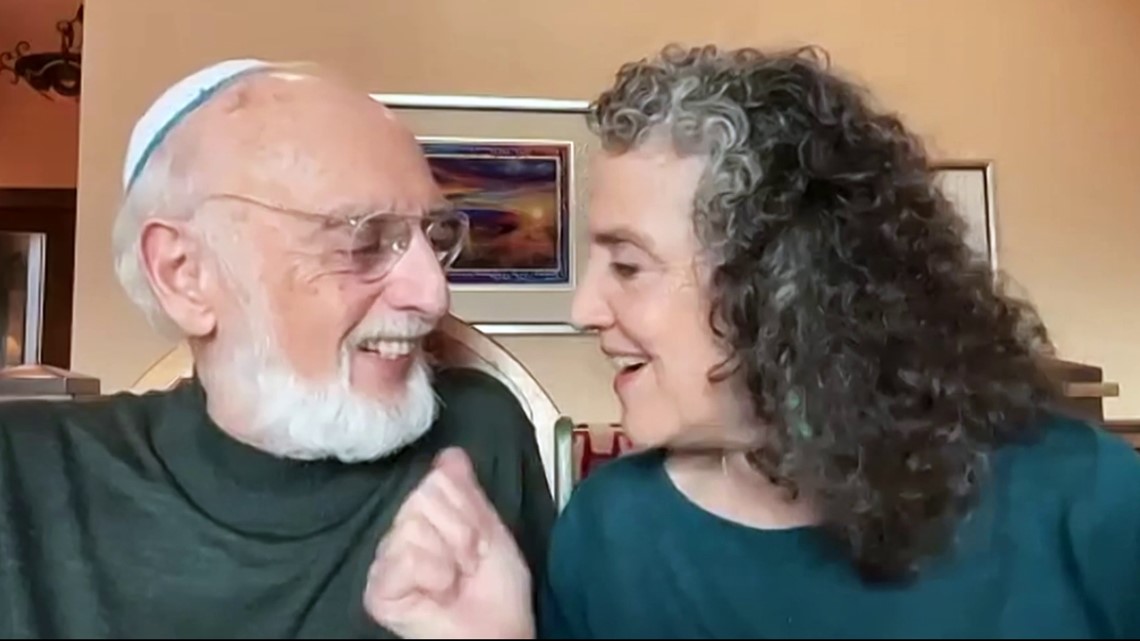Can math predict the future of your relationship?
A pair of psychologists who have studied couples for decades share some formulas this Valentine’s Day they say can make or break a relationship.
GOLDEN VALLEY, Minn. — Is there a magic formula for everlasting love? Probably not, but there could be a mathematical one!
Renowned clinical psychologists, Drs. Julie and John Gottman, have studied thousands of couples, following some for as long as 20 years. The couple, married for more than 35 years themselves, wrote a book after watching many couples struggling to come out of a couple chaotic pandemic years.
“When people were quarantined together some of them really connected at a deeper level, really got closer. The good relationships got better but the bad relationships got much worse,” says Dr. Julie Gottman.
We decided to ask them for some tips since they’ve been studying couples for decades. They share some formulas they say can make or break a relationship.
“What we discovered was that you could predict, with very high accuracy, the future of a relationship just by looking at the way couples talk to one another and what was going on physiologically in their bodies,” says Dr. John Gottman.
So, what’s the secret sauce? Love, they say, is a practice, an action if you will. This is where the work part comes in. Look for what your partner is doing right, rather than wrong, and thank them for it.
Skip the grand gestures and go for small things often. And when your partner bids for your attention, turn toward them.
They even acted out what they meant for us.
“Oh, Julie, look at that hummingbird,” says John. “Wow, that’s beautiful,” replies Julie. “OK, so here’s what we’re seeing: John’s making a bid for connection with his phrase. He wants me to turn toward him. Not physically necessarily, but emotionally, so my saying, ‘Wow, that’s a beautiful bird,’ is turning toward him,” Julie explains.
You have three options when your partner bids for your attention.
- Turning toward them, like the Gottmans explained.
- Turning away would be to ignore your partner’s comment altogether.
- Turning against, which would be to snap back something like, “Quit interrupting me; I’m trying to read my book.”
“Couples who were successful six years down the road, turned towards each other’s bids for connection 86% of the time,” says Julie.
Those who ended up apart only turned toward their partners 33% of the time.
“These little, tiny moments, just saying, “Huh, cool.” That’s all it takes to change the course of a relationship from a disaster to a master,” she says.
If the secret sauce isn’t your thing, how about mathematical equations?
The Gottmans found that successful couples have a winning ratio. Five to one. Five positive interactions to every negative one during conflicts. Outside of arguments, this ratio is even higher.
During everyday life, successful couples have at least 20 positive interactions for every negative one. And let’s not forgot about a big part of relationships — physical touch. Again, it’s not the grand gestures, but the small things.
“Upon reunion at the end of the day, greet your partner with a hug and a six-second kiss. A kiss that lasts at least six seconds. ‘Cause when you do that, you’re both secreting oxytocin because we are mammals and that’s the hormone of bonding and connections,” says John.
Just a few helpful nudges to deepen your connection. Now go work on your love.
You can learn more about the Gottmans’ work by visiting the Gottman Institute’s website.
Watch the latest local news from the Twin Cities in our YouTube playlist:
https://www.youtube.com/watch?v=videoseries
No Byline Policy
Editorial Guidelines
Corrections Policy
Source
